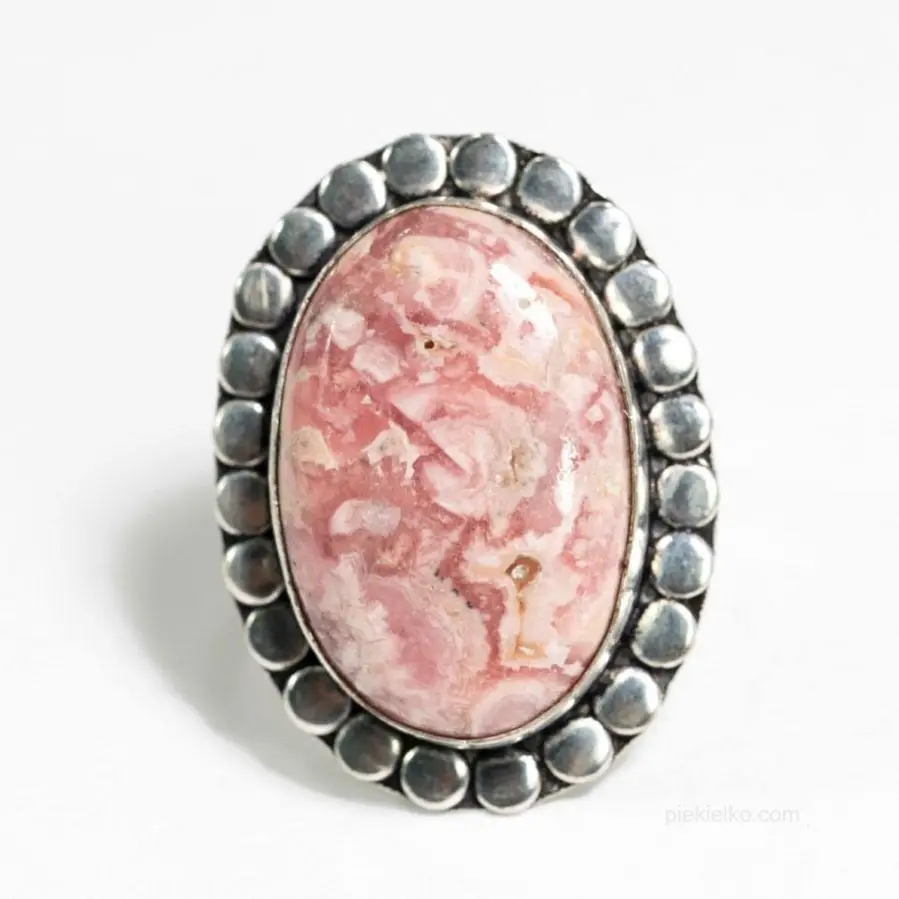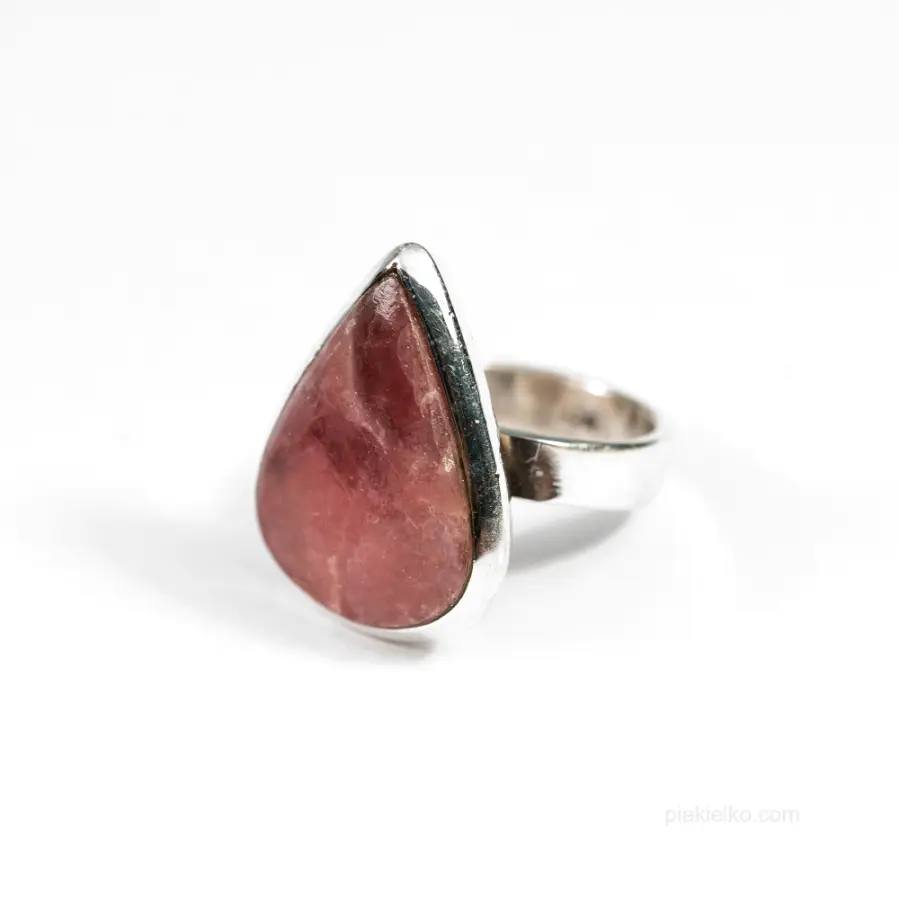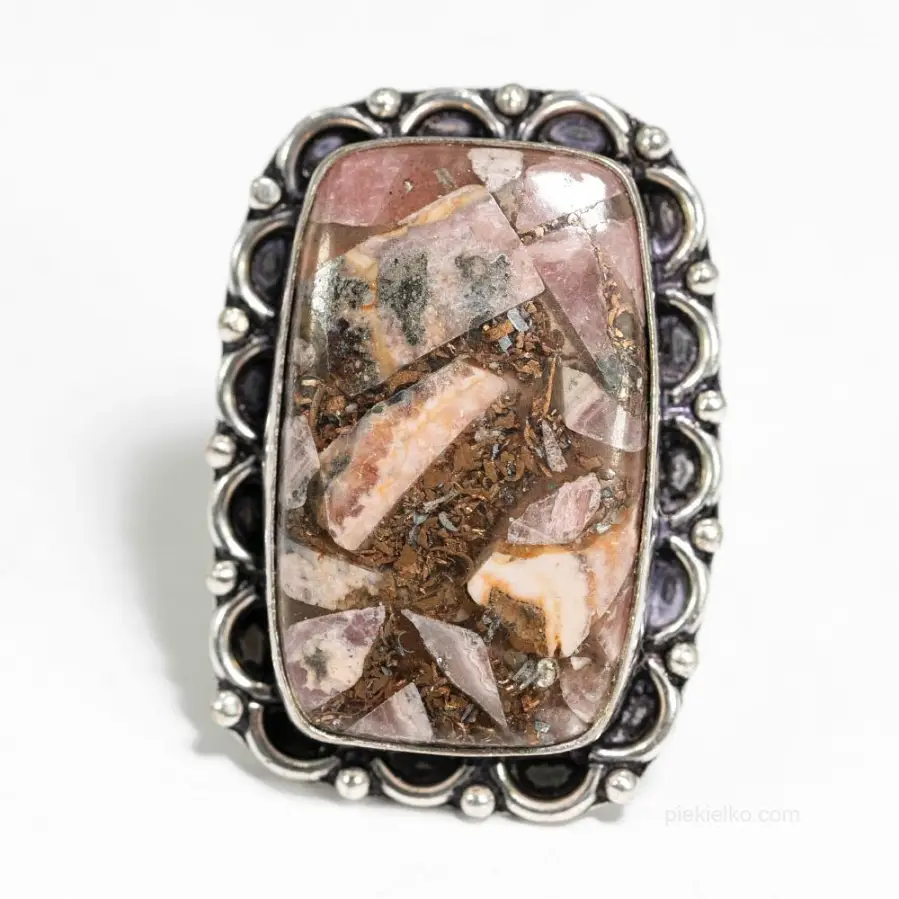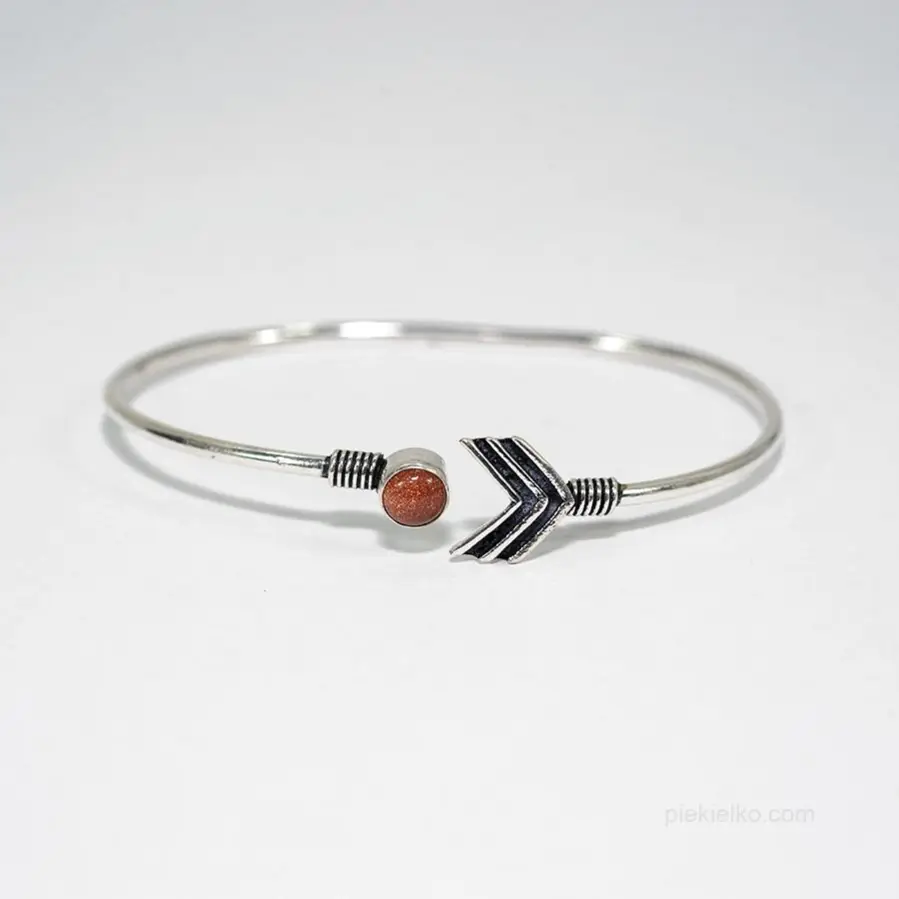Intermediates
Gallantry and accessories
Blog Piekiełka
Rhodochrosite - pink gemstone

German mineralogist Abraham Gottlob Werner (1749-1817) named the mineral manganese spathite because of its chemical composition and good schistability. It wasn't until another mineral expert Friedrich Hausmann gave it the name "rhodochrosite," which is still valid today, in 1813. It is derived from the ancient Greek word rhodochrosis, which can be translated as "pink color." Apparently, in the Attic or Aeolian dialect, the word ῥόδον (βρόδον) had the meaning of "rosy, smelling of rose), but it is known, after all, that the name of the stone refers to its color, not to olfactory sensations.
Later, Professor August Breithaupt (1791-1873) found the name awful-sounding and difficult to pronounce and suggested the name "raspberry spätzle" or "rose spätzle." In German, they are still found today, although obsolete, as synonyms for rhodochrosite (Himbeerspat, Rosenspat).
The Incas, famous creators of their own state in Pre-Columbian America, called the mineral "the rose of the Incas." According to accounts, the Indians revered rhodochrosite as a stone of love and heart. Quite a special feature of this mineral is its pink color and characteristic striping.
Properties of rhodochrosite
"Rhodochrosite" is a mineral of the carbonate cluster, and chemically - manganese carbonate. It is mostly formed secondarily in the oxidation zone of manganese deposits, where water containing carbonic acid combines with manganese oxide. It is considered a typical associated mineral. The most important deposits of this formation, where most of the pink stones on the market come from, are located in Argentina and Peru.
As a manganese mineral, rhodochrosite is related to rhodonite, a manganese and calcium silicate. Rhodonite has a similar pink color to rhodochrosite, but usually shows black dendritic inclusions of manganese oxide. Because of its membership in the carbonate cluster, rhodochrosite also has links to smithsonite, gaspeite and calcite. It can also resemble fire opal, tugtupite, pink tourmaline and bustamite in appearance.
The luster of rhodochrosite is glassy, and on the surfaces of the split it is also pearly. It has excellent flakiness, the break is uneven and shell-like. On the Mohs scale, it shows a hardness of 3.5 to 4 on a ten-point scale, so it is relatively soft and in this respect cannot be classified as a gemstone. The density of rhodochrosite is 3.30 bis 3.70 g/cm3
Color of rhodochrosite
The color of rhodochrosite is mostly pinkish-red to raspberry (hence the name "raspberry sprite"). However, the stone can also be white, yellow or brown. Very often raspberry rhodochrosite shows lighter and darker layers, is marbled or otherwise patterned. This is the result of different concentrations of elements in different layers during the period of formation of the mineral. Because of its similar color, rhodochrosite is sometimes confused especially with rhodonite, pink quartz or pink-colored dolomite.
The intensity of the mineral's color is highly variable. It depends not only on the proportion of manganese in its composition, but also on the size of the crystals or the granularity of the aggregate: the larger they are, the darker the color of the stone. The color of rhodochrosite is also affected by the temperature conditions during its formation. Thus, intense cherry-red layers were formed at high temperatures and relatively weak concentrations. Pale pink and lighter rhodochrosite was formed at lower temperatures and higher contents of manganese, iron, calcium and magnesium. Rhodochrosite, which can be easily mistaken for rhodonite at first glance due to its color, however, has typical striations or concentric, ring-like inclusions.
Occurrence of rhodochrosite and size of crystals
So far, the mineral has been shown to occur at 1,400 sites. It is increasingly difficult to get good quality stones at affordable prices. Therefore, rhodochrosite belongs to the group of valuable, exclusive types of stones. Most of the rhodochrosite offered on the market in the form of various products, from earrings and pendants to bracelets, comes from Peru and Argentina. Almost all of the minerals exported from Peru to the rest of the world are mined at a silver mine near Lima (Uchucchacua mine), which has been in operation since colonial times. There you can find magnificent dark red crystals that have grown on manganese-rich soil. In Argentina, rhodochrosite is the national stone.
A famous location is the Cavnic mine in Romania, famous for its pink, spherical to kidney-shaped aggregates. Another famous mine is the Alma mine in Colorado, where crystals up to 15 cm in size are found, and also in South Africa. Beautiful crystals have also been found in Germany and Austria, and even in Upper Silesia in Poland.
Uses and effects of rhodochrosite
The pink mineral is used as a jewelry and decorative stone, rarely for making other artistic items. Archaeological finds in ancient tombs in Egypt prove that rhodochrosite is one of the oldest decorative stones in the world. Since manganese oxide or manganese ore was later also used to make enamel, it is not impossible that our ancestors from ancient Egypt and the Roman empire still reached for this mineral and used it accordingly.
Particularly popular are raspberry-red specimens with white, delicate drawing. They are suitable for pendants and earrings. Since the stone is quite soft, it is only used to a limited extent for making bracelets and rings due to the possibility of damage. A cabochon cut is preferred, which highlights the subtle patterns of the stone well.
As a healing stone, rhodochrosite should be placed under a cushion. Another option is to wear a pendant made of this mineral on a chain at heart level. In any case, it should not be worn for more than two weeks at a time, as it gives off too much energy. To combat migraines, place the stone in the area of pain at the back of the head.
Effect of the mineral on the body
The effect of the stone is felt in the overall functioning of the body. It especially helps the pancreas, spleen and indigestion. It supports the treatment of respiratory diseases, as well as lung diseases and diabetes and kidney diseases. It strengthens the heart and has a good effect on eyesight.
Effect of rhodochrosite on the soul and feelings
The effect of the stone is multifaceted - it can give more contentment, help overcome fears and bring love and harmony into life. With the stone, its owner will find it easier to find a way out of trouble and start a new life. It will help overcome bad thoughts, awaken longing and facilitate new social contacts. Besides, it will provide spontaneity, good humor and sociability. It will give vitality and joy, provide balance and open to new challenges.
Rhodochrosite and zodiac signs
The pink mineral is an important master stone for the constellation of Taurus. This healing stone supports his confident approach to life and allows him to show discipleship. It is also an important support stone for the sign of Cancer, as it opens his eyes to reality and increases his self-esteem.



© Piekielko.com





